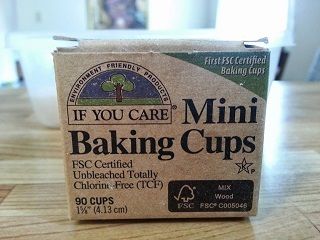From Guest Blogger Ed: The Humble Paper Cup In 2015 And Its Environmental Impact

It is now fashionable to drink your favourite beverage out of a paper cup labelled as eco-friendly, but what does a label like this really mean and what are the implications once the drink has been consumed?
An estimated 2.5 billion cups are disposed of in Britain every year, and only a small percentage get recycled mostly ending up in landfill, causing 25,000 tonnes of waste. Traditionally paper cups have been made from paper, laminated with plastic which makes it tough to recycle. It is attached so tightly that the cups need specialised equipment to separate the linings, with almost all recycling plants discarding the cups and sending them straight to landfill.
EU health and safety regulations outlaws’ paper cups being made 100% from paper or cardboard alone. A layer of plastic is pressed onto the cup to keep the drink at a decent temperature and stops the cup becoming soft and wet.
It is a common misconception that because the cups are made of paper they can be easily recycled by individual consumers. Once the cups leave the store there is no common processes for individual consumers to get the used cups to the required specialist plants. The Paper cups that are recycled are mainly collected directly from retail outlets. ‘Save a cup’ is a British non-profit plastic and polystyrene recycler, who collect used cups directly from retail stores and organisations.
Industries involved with selling hot drinks give too much responsibility to small organisations like ‘Save a cup’ as well as local councils. Economically, it isn’t productive to pick individual coffee cups from the recycling centres and councils see the non-renewable cup issue as a problem created by the cup manufacturers and coffee retailers.
Starbucks, the biggest commercial coffee chain, who go through millions of disposable cups every year, have recently admitted the scale of the problem, as they failed to hit self-set key targets, which included serving 25% of their drinks in reusable cups by the year 2015. In 2011 only 1.9% of drinks they served were in a reusable cup.
Standard cups are made using a thin lining of polyethylene (PE) on the inner wall, which makes the cup watertight, but to be a biodegradable paper cup, other methods of manufacture have to be implemented.
A common way this is done, is to use a starch based compound, called PolyLactic, (PLA). It is made from corn and other starch rich plants including wheat and sugar beets, which is then fixed into the cups and is used as a substitute for the polyethylene lining (PE). PLA is labelled as a renewable resource because PLA can be produced by growing more crops.
British engineer Martin Myerscough, inventor of the ‘cardboard’ bottle which is now been used on milk and wine has come up with an innovative way to make the paper cup recycling process simpler. The “Green Your Cup” has a thinner liner that is engineered to separate easily from the paper in the recycling process, just leaving paper which can then be recycled. This would be the first totally recyclable paper cup to gain momentum on the streets of the UK, and would create a huge transformation that would directly change how paper cups are commonly recycled and thrown away.
They have been in ongoing talks with coffee shop chains and supermarkets to get these cups to market. The cups have also been designed to be dispensed into paper recycling bins, helping consumers know which bins to use.
The consumer group “Which” has been very critical of retailers who still use mixed materials which has put tremendous pressure on them to be more environmentally responsible by giving their consumers more precise information about their products materials and how to recycle them.
Currently, the paper cups being used to sell coffee in retailers around the UK often come from an 80 year old tree. It can take 80 years to grow a tree which is used for a single use coffee cup.
Unfortunately, paper cups are a high offending culprit in a planet generating huge amounts of litter, which leaves plastic in the environment even after the board on the cup degrades. Our aim as a world community should be to reduce the physical and environmental impact of paper cups and other offenders littering the earth.
References
The Guardian “World’s first fully recyclable paper cup to hit UK high streets”
